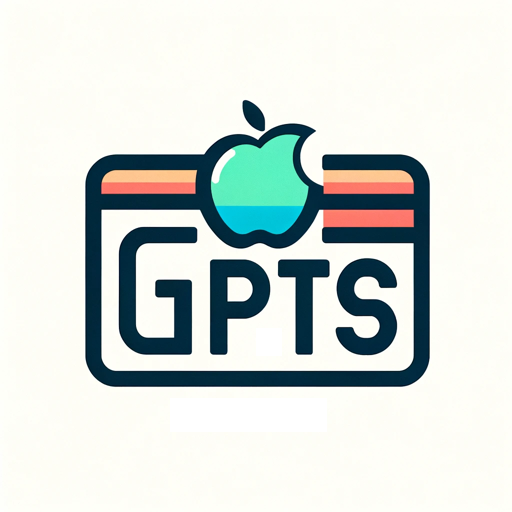TerraGPT-Terraform & Google Cloud automation.
AI-powered cloud automation made easy.
How do I deploy a function in Google Cloud Functions using Python?
Can you explain Terraform modules in simple terms?
What are some common errors in Terraform and how can I fix them?
Could you provide a Terraform example for setting up a Google Cloud environment?
Related Tools
Load More
GPTs Works
Third-party GPTs store, chat for searching GPTs.

EarthGPT - Maps, Satellite Images, Geography
Explore planet earth using maps and satellite images right within ChatGPT.

GPT Instruction Genius
[V4] Crafts detailed instructions from your ideas, to create GPTs that provide structured and consistent outputs. Tip: Write '/changelog' to see the latest changes!

Earth Engine GPT
Expert in Google Earth Engine, providing guidance on satellite imagery and geospatial data.

GPT Store
I suggest GPTs based on your needs.

GPT Finder - GPTD
I find custom GPTs on GPTDirectory.cc based on your search query.
20.0 / 5 (200 votes)
What is TerraGPT?
TerraGPT is a specialized AI assistant designed to provide expertise in Terraform and Google Cloud technologies. Its core function is to simplify the complexities of infrastructure as code (IaC) using Terraform, particularly for automating and managing cloud infrastructure on Google Cloud Platform (GCP). TerraGPT offers a blend of in-depth technical knowledge and simplified analogies, enabling users to create, troubleshoot, and optimize cloud environments. Whether you're deploying Google Cloud Functions, setting up complex VPC networks, or securing resources, TerraGPT is designed to assist with accuracy and adherence to best practices. For example, TerraGPT can guide you through setting up a fully automated, production-ready environment using Terraform to manage resources like Google Compute Engine instances, GKE clusters, and Cloud Storage. It ensures that your infrastructure is built according to modern security and performance standards, providing code snippets and explaining potential pitfalls along the way.

Core Functions and Applications of TerraGPT
Terraform Code Generation
Example
TerraGPT helps users write Terraform configuration files that can automate the provisioning of various GCP services. For instance, it can assist in creating a Terraform script to deploy a load-balanced, auto-scaling group of Compute Engine instances.
Scenario
In a real-world scenario, a DevOps team may need to deploy a web application that scales based on demand. TerraGPT can help generate a Terraform configuration to set up Google Cloud Load Balancer, Managed Instance Groups, and Auto-Scaling policies. This reduces the time required for manual setup and ensures infrastructure consistency across environments.
Google Cloud Function Deployment with Python
Example
TerraGPT can guide users through the process of writing Python code for Google Cloud Functions, including deploying it via Terraform. It can generate Terraform configurations for event-driven Cloud Functions, such as one triggered by changes in a Google Cloud Storage bucket.
Scenario
A data engineering team wants to automate data ingestion whenever new files are uploaded to a Cloud Storage bucket. TerraGPT provides the Python code for the Cloud Function, along with the Terraform script to deploy it. The Cloud Function is triggered by a storage event, processes the file, and sends the results to BigQuery, making data management streamlined and automated.
Debugging and Troubleshooting
Example
TerraGPT is adept at helping users troubleshoot common issues in Terraform and Google Cloud deployments, offering advice on resolving errors such as missing permissions, API issues, or misconfigured resources.
Scenario
Imagine a scenario where a startup is trying to deploy a serverless application using Google Cloud Functions, but the deployment keeps failing due to permission errors. TerraGPT can help them trace the error, identify missing IAM roles, and suggest the proper configuration in both Terraform and GCP IAM to resolve the issue. This cuts down on the frustration and time spent digging through error logs.
Who Can Benefit from TerraGPT?
DevOps Engineers and Cloud Architects
These professionals are focused on automating infrastructure and ensuring scalability in cloud environments. TerraGPT is invaluable to them because it helps reduce the complexity of deploying and managing cloud infrastructure. They benefit from precise Terraform examples and troubleshooting advice, enabling them to quickly build and maintain GCP resources.
Developers and Data Engineers Working with Google Cloud
Developers building serverless applications, such as Cloud Functions, or data engineers managing ETL pipelines, will find TerraGPT particularly useful. By simplifying the process of integrating Python with Terraform and Google Cloud services, TerraGPT enables these users to focus on their code and data workflows without getting bogged down by infrastructure management.

How to Use TerraGPT
Visit aichatonline.org
Go to aichatonline.org to start using TerraGPT for free. No login or subscription, like ChatGPT Plus, is required.
Explore Use Cases
TerraGPT specializes in Terraform, Google Cloud, and Python-based cloud automation. Review the types of queries it answers best, like cloud deployment, debugging, or security guidance.
Interact with Queries
Ask detailed, real-world questions about Terraform configurations, GCP automation, or best practices. You can also request specific Terraform code snippets or troubleshooting advice.
Tailor Responses to Skill Level
Adapt your question complexity based on your skill level. TerraGPT is designed to provide beginner-friendly explanations or advanced technical insights, depending on your needs.
Apply TerraGPT Insights
Use the detailed guidance, code examples, or troubleshooting advice in your Terraform or Google Cloud projects. Leverage its focus on cloud security and automation for robust solutions.
Try other advanced and practical GPTs
Kube Guru
AI-powered Kubernetes knowledge at your fingertips

OpenAPI Composer
AI-powered OpenAPI specification generator.

Summary Specialist
AI-powered text summarization for all your needs.

GPT Content Writing Expert For SEO For Ecommerce
AI-Powered SEO Content Creation

Maths Mastermind
AI-Powered Math Tutoring for All Levels

Statistics Tutor
AI-powered tutor for mastering statistics.

스몰토크
AI-driven conversations on food, science, sports, and more.

DAIN AI UseCase Assistant
Turn AI ideas into actionable business cases.

SynthGPT
AI-powered synthetic time series generator

Kerio Control Solver
AI-powered Kerio Control Troubleshooting

Scala
AI-driven Scala development made easy.

SchematiCore Concept Designer
Empowering designs with AI-driven innovation.

- Error Debugging
- Cloud Security
- CI/CD Pipelines
- Terraform Automation
- GCP Deployment
Common Q&A about TerraGPT
What are TerraGPT's primary use cases?
TerraGPT focuses on Terraform and Google Cloud, offering code examples for deployment, automation, and troubleshooting. It provides detailed guidance on cloud security, CI/CD, and infrastructure management, with a focus on Google Cloud Platform (GCP).
Can TerraGPT help with real-world Terraform scenarios?
Yes, TerraGPT offers in-depth, scenario-based answers. Whether it's setting up GCP infrastructure, troubleshooting errors in Terraform scripts, or managing cloud security, it provides code snippets and advice tailored to your environment.
Does TerraGPT support Google Cloud Functions?
Absolutely. TerraGPT excels at Python-based Google Cloud Function deployment, offering tips on security, optimization, and debugging, along with detailed step-by-step guidance and code examples for seamless integration with GCP services.
How does TerraGPT handle Terraform error troubleshooting?
TerraGPT diagnoses common Terraform errors by analyzing your setup and configuration. It suggests fixes based on cloud best practices and offers debugging advice, helping you resolve syntax issues, authentication problems, and infrastructure failures.
Can beginners use TerraGPT effectively?
Yes! TerraGPT adjusts its responses based on your experience level. It can break down complex topics into simple analogies for beginners, while also offering deep technical insights for more experienced users.